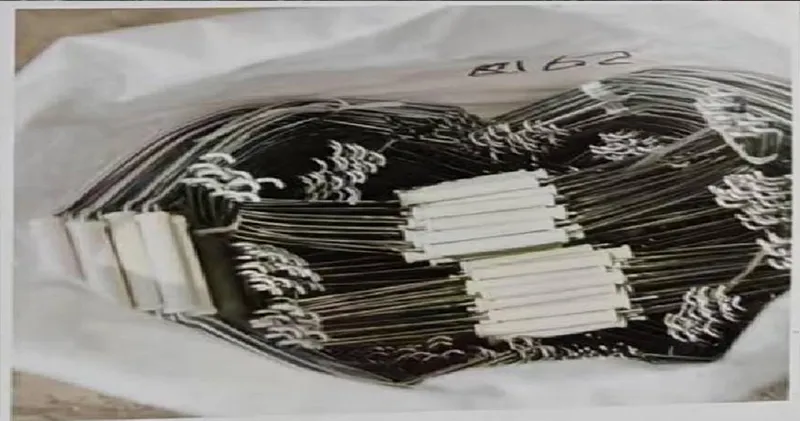-
 Phone:
Phone: -
 Email:
Email:

Coated Nichrome Wire for Efficient Heating Applications and Electrical Resistance Solutions
The Versatility and Applications of Coated Nichrome Wire
Nichrome wire, an alloy primarily composed of nickel and chromium, has gained significant popularity for its exceptional resistance to oxidation and high-temperature stability. When coated, nichrome wire boasts even more impressive qualities, making it an indispensable material in various industrial and commercial applications. This article delves into the characteristics, benefits, and diverse uses of coated nichrome wire.
Properties of Coated Nichrome Wire
Coated nichrome wire is typically enveloped in a protective layer of insulation, which enhances its durability and performance in various conditions. The insulation can be made from materials such as silicone, fiberglass, or polyurethane, depending on the specific application. This coating not only protects the wire from environmental factors such as moisture and mechanical abrasion but also increases its resistance to electrical leakage and short circuits.
One of the standout features of nichrome wire is its ability to withstand high temperatures without losing its structural integrity. This is especially important in applications where heat resistance is crucial. The coated version takes this a step further by ensuring that the insulation maintains its properties even under extreme conditions, enhancing safety and efficiency.
Advantages of Using Coated Nichrome Wire
The advantages of coated nichrome wire extend beyond its temperature resistance. The coated layer allows for safer handling, as the insulation reduces the risk of accidental electric shocks during operation. Additionally, the coated wire is easier to install in various environments, including laboratories, electric furnaces, and heating elements.
Moreover, the coating adds versatility to the wire, attracting a wider range of applications. Coated nichrome wire can be bent and shaped according to specifications without compromising its integrity, making it an excellent choice for custom heating elements and appliances.
coated nichrome wire

Applications of Coated Nichrome Wire
1. Heating Elements One of the most common uses for coated nichrome wire is in heating elements found in toasters, ovens, hot plates, and industrial furnaces. The wire's ability to reach high temperatures efficiently makes it ideal for these applications.
2. Thermostats and Temperature Sensors Coated nichrome wire is utilized in the production of thermocouples and other temperature-sensing devices. Its thermal stability ensures accurate temperature readings, critical in various scientific and industrial processes.
3. Resistive Heating in Laboratories In laboratory settings, nichrome wire is often used in resistive heating applications, where precise temperature control is needed for experiments. The coated wire provides the necessary performance while ensuring safety for laboratory personnel.
4. Automotive Industry The coated nichrome wire is employed in automotive applications, including heated seats and mirrors, due to its efficiency and reliability in generating heat.
5. Jewelry Making Artisans often use coated nichrome wire for creating intricate designs in jewelry making, benefiting from the wire's ability to withstand high temperatures during soldering processes.
Conclusion
Coated nichrome wire is a remarkable material with wide-ranging applications due to its impressive characteristics, including high-temperature resistance, durability, and versatility. As technology continues to advance, the demand for efficient and reliable materials like coated nichrome wire is only expected to grow, enabling further innovations across various industries. Understanding its properties and benefits not only informs its use but also highlights the importance of material selection in engineering and manufacturing processes. Whether in heating elements, automotive parts, or laboratory equipment, coated nichrome wire remains a cornerstone of modern technology, embodying the perfect balance between performance and safety.
-
Wire Mesh for Every Need: A Practical SolutionNewsJul.25,2025
-
Steel Fences: Durable, Secure, and Stylish OptionsNewsJul.25,2025
-
Roll Top Fencing: A Smart Solution for Safety and SecurityNewsJul.25,2025
-
Cattle Farm Fencing Solutions for Maximum SecurityNewsJul.25,2025
-
Affordable Iron Binding Wire SolutionsNewsJul.25,2025
-
Affordable Galvanized Wire SolutionsNewsJul.25,2025
-
Wire Hanger Recycling IdeasNewsJul.25,2025








